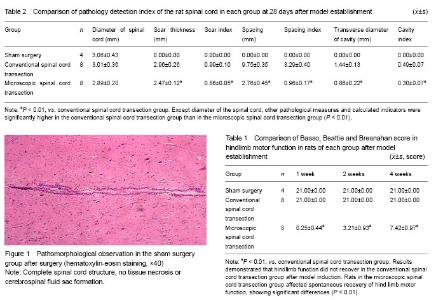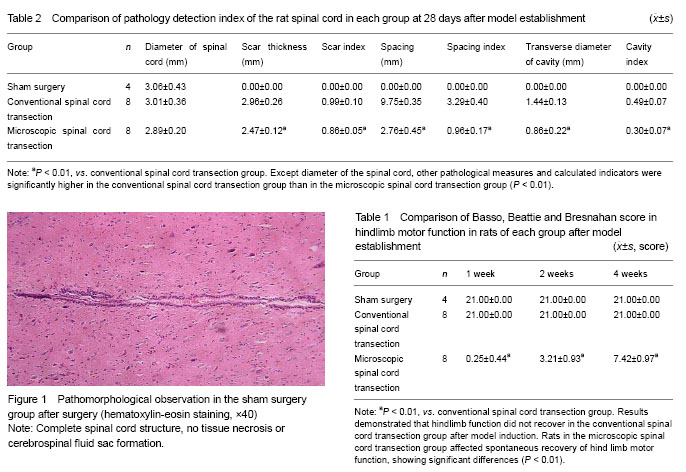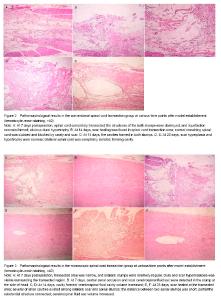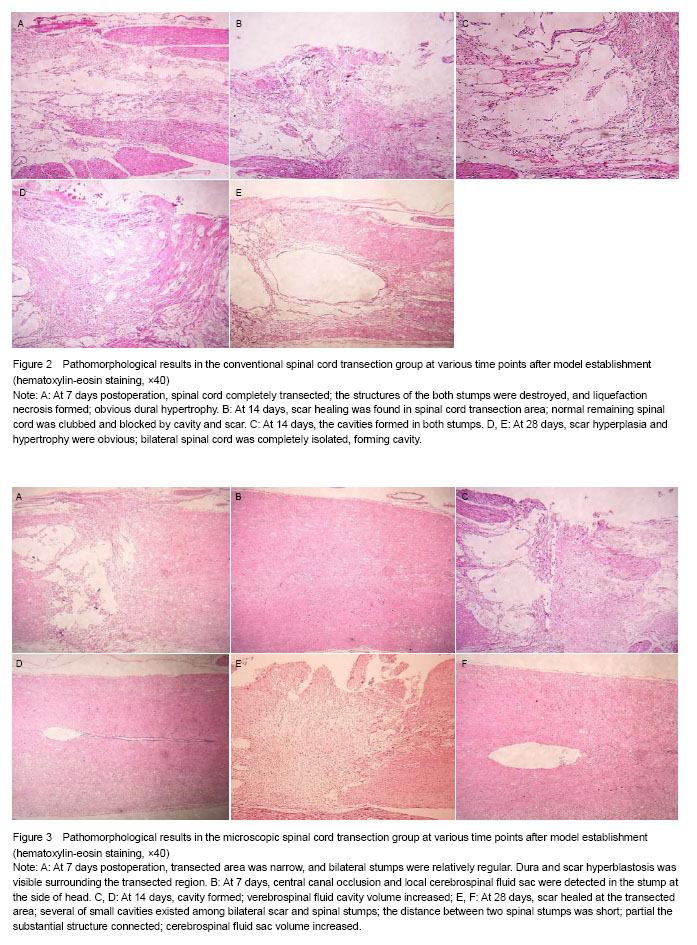| [1] |
Tang Mengmeng, Chen Hechun, Xie Hongchen, Zhang Yu, Tan Xiaoshuang, Sun Yixuan, Huang Yina.
Histocompatibility of
poly(L-lactide-co-ε-caprolactone)/cross-linked polyvinylpyrrolidone ureteral
stent grafted into the rat bladder
[J]. Chinese Journal of Tissue Engineering Research, 2020, 24(4): 583-588.
|
| [2] |
Xu Zhuqiu, Lu Haibin, Feng Weifeng, Yang Xiaonan, Qi Zuoliang.
3-Methyladenine improves the efficiency of sciatic nerve
allograft in mice
[J]. Chinese Journal of Tissue Engineering Research, 2020, 24(11): 1671-1676.
|
| [3] |
Chen Huijing, Chen Yun, Deng Yuer, Gan Yanling, Zhan Wengang, Tan Qijia, Xie Caijun, Li Cong, Zhang Zhiqiang.
Short- and long-term effects of olfactory ensheathing cells in the treatment of chronic spinal cord injury: a meta-analysis
[J]. Chinese Journal of Tissue Engineering Research, 2019, 23(9): 1468-1476.
|
| [4] |
Wei Weibing1, Zhou Xiangxing1, Zhou Binbin2, Li Yijun1, Zou Zhilong1, Yang Hui1 .
Evaluation of lower limb function in rat models of spinal cord injury at different segments
[J]. Chinese Journal of Tissue Engineering Research, 2019, 23(7): 1073-1077.
|
| [5] |
Wei Weibing, Zou Zhilong, Zhou Binbin, Li Bolin, Qin Jingyu, Feng Zhenfen, Li Jiannan, Ye Liangying,Wu Rongmi.
Selection of injury segments in a rat model of spinal cord injury: network meta-analysis
[J]. Chinese Journal of Tissue Engineering Research, 2019, 23(4): 650-656.
|
| [6] |
Lu Jinwei, Chen Xi, Ye Chenyi, He Rongxin, Tang Lan, Yu Yunxian.
Subchondral bone cysts in osteoarthritis: abnormal reconstruction of subchondral bone
[J]. Chinese Journal of Tissue Engineering Research, 2019, 23(32): 5209-5215.
|
| [7] |
Kong Lingyao, Li Tao, Zeng Xinglin, Li Jian, Xiong Yan.
Synovial chondromatosis: how to improve the diagnosis accuracy and clearance rate of tumor cells
[J]. Chinese Journal of Tissue Engineering Research, 2019, 23(28): 4570-4575.
|
| [8] |
Deng Guiying1, 2, Zeng Gaofeng3, Cen Zhongxi1, Gao Yunbing1, Cao Baichuan1, Huang Jianhua1, Zong Shaohui1 .
Effect of miRNA-136-5p on inflammatory factors in rat models of acute spinal cord injury
[J]. Chinese Journal of Tissue Engineering Research, 2019, 23(15): 2397-2402.
|
| [9] |
Huang Jianhua1, Zeng Gaofeng2, Cen Zhongxi1, Deng Guiying1, Gao Yunbing1, Zong Shaohui1 .
Changes of cytokines in peripheral blood within 48 hours after acute spinal cord injury
[J]. Chinese Journal of Tissue Engineering Research, 2019, 23(15): 2409-2414.
|
| [10] |
He Zhijiang, Zhu Lei, Cheng Shixiang, Huang Kui, Chen Cao, Sun Minglin.
Neurotrophin-3 modified hyaluronan-methylcellulose hydrogel promotes neurological function in rats with spinal cord injury
[J]. Chinese Journal of Tissue Engineering Research, 2019, 23(14): 2202-2207.
|
| [11] |
Cheng Jianping, Li Hua, Li Xiongjie.
Bone marrow mesenchymal stem cell transplantation combined with Lindera glauca leaf extract attenutes inflammation after spinal cord injury
[J]. Chinese Journal of Tissue Engineering Research, 2019, 23(13): 1975-1981.
|
| [12] |
Wei Weibing, Zhou Binbin, Li Bolin, Qin Jingyu, Feng Zhenfen, Li Jiannan.
Methods for establishing rat models of spinal cord injury: a meta-analysis
[J]. Chinese Journal of Tissue Engineering Research, 2019, 23(12): 1949-1954.
|
| [13] |
Cai Zhiguo, Liu Qi, Du Shasha, Yang Kun.
Resolvin E1 inhibits periodontitis and promotes reconstruction of periodontal tissue
[J]. Chinese Journal of Tissue Engineering Research, 2019, 23(11): 1794-1798.
|
| [14] |
Li Ren-bin, Yu Guang-shu, Lin Yan-bin, Zhou Jia-feng, Huang Yi-qi, Zheng Wei.
Edaravone effects on the expression levels of collagen type I and IV after spinal cord injury in rats
[J]. Chinese Journal of Tissue Engineering Research, 2018, 22(8): 1235-1240.
|
| [15] |
Wang Ji-chao, Zhu Jun-peng, Wu Xue-ping.
Physical activities promote recovery from spinal cord injury in patients
[J]. Chinese Journal of Tissue Engineering Research, 2018, 22(8): 1287-1293.
|



